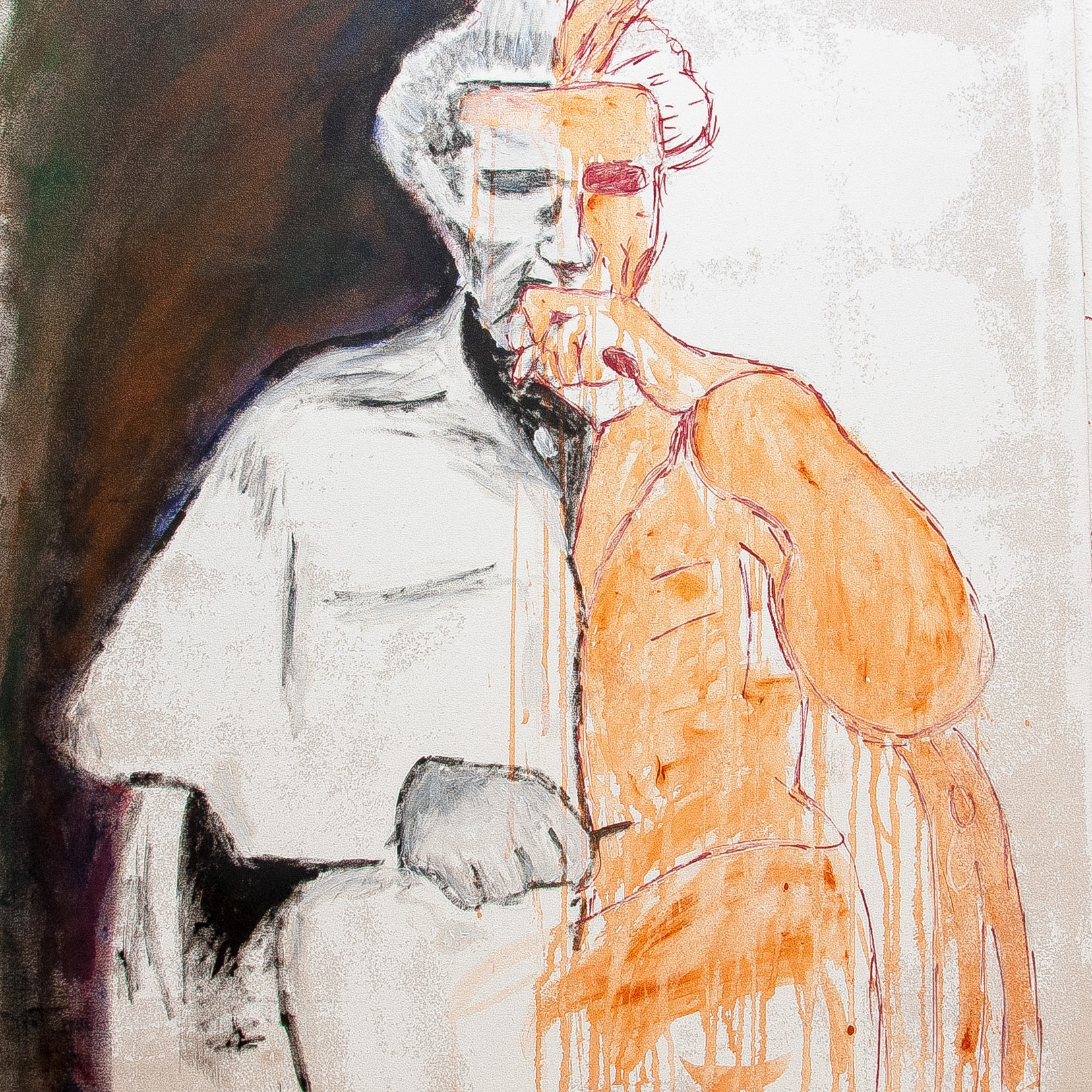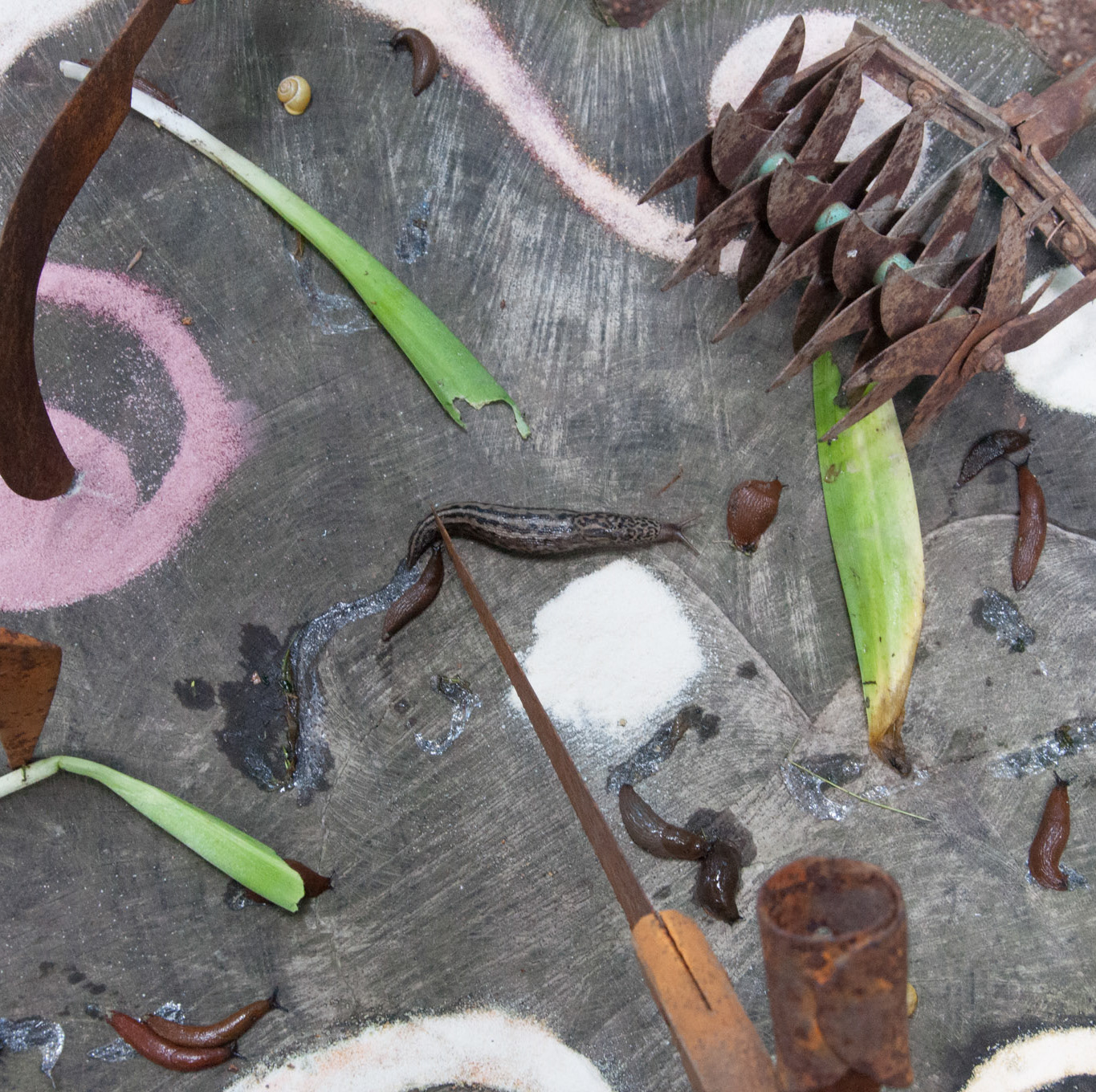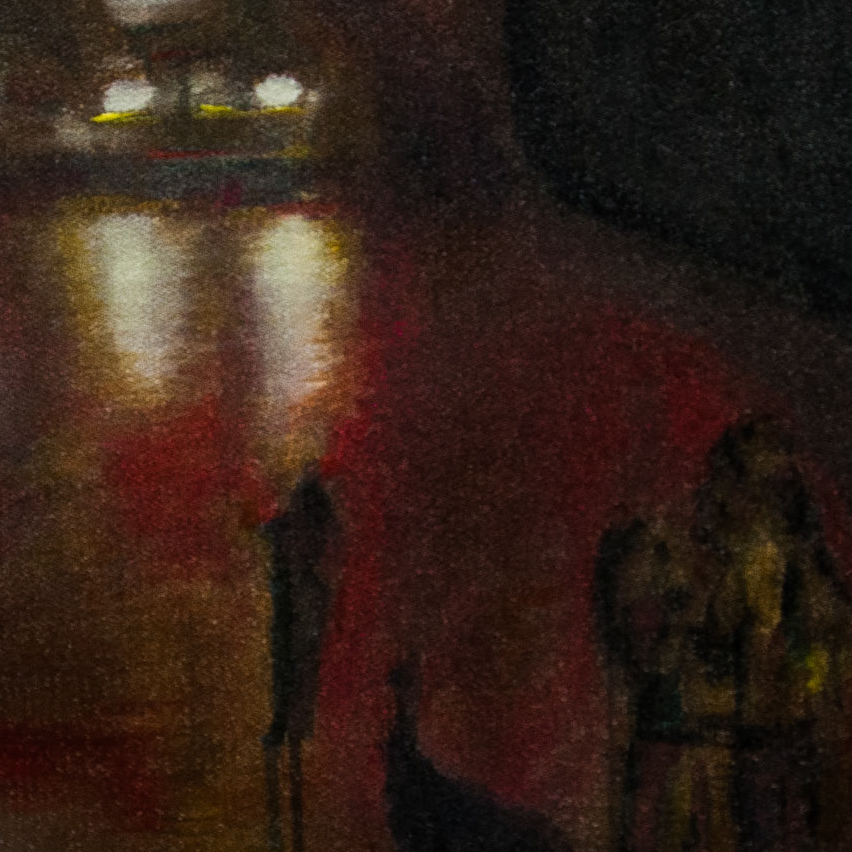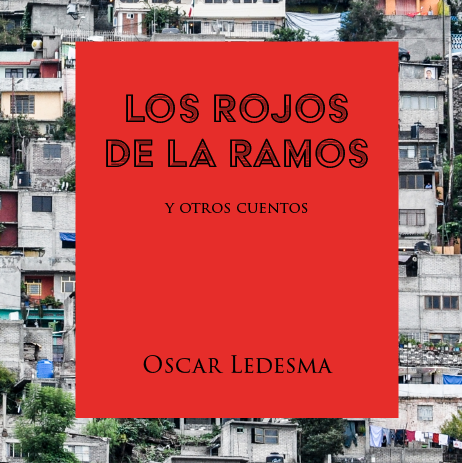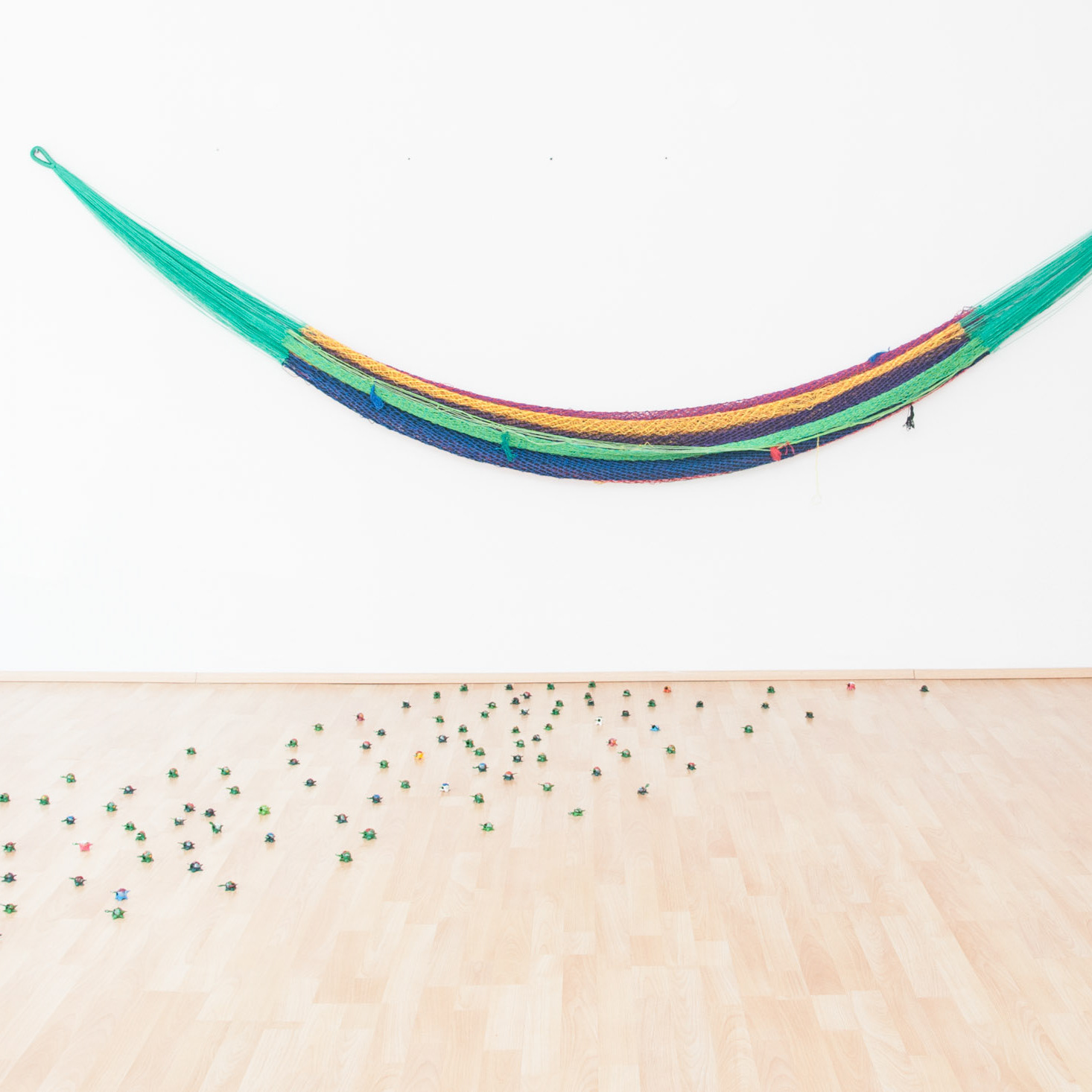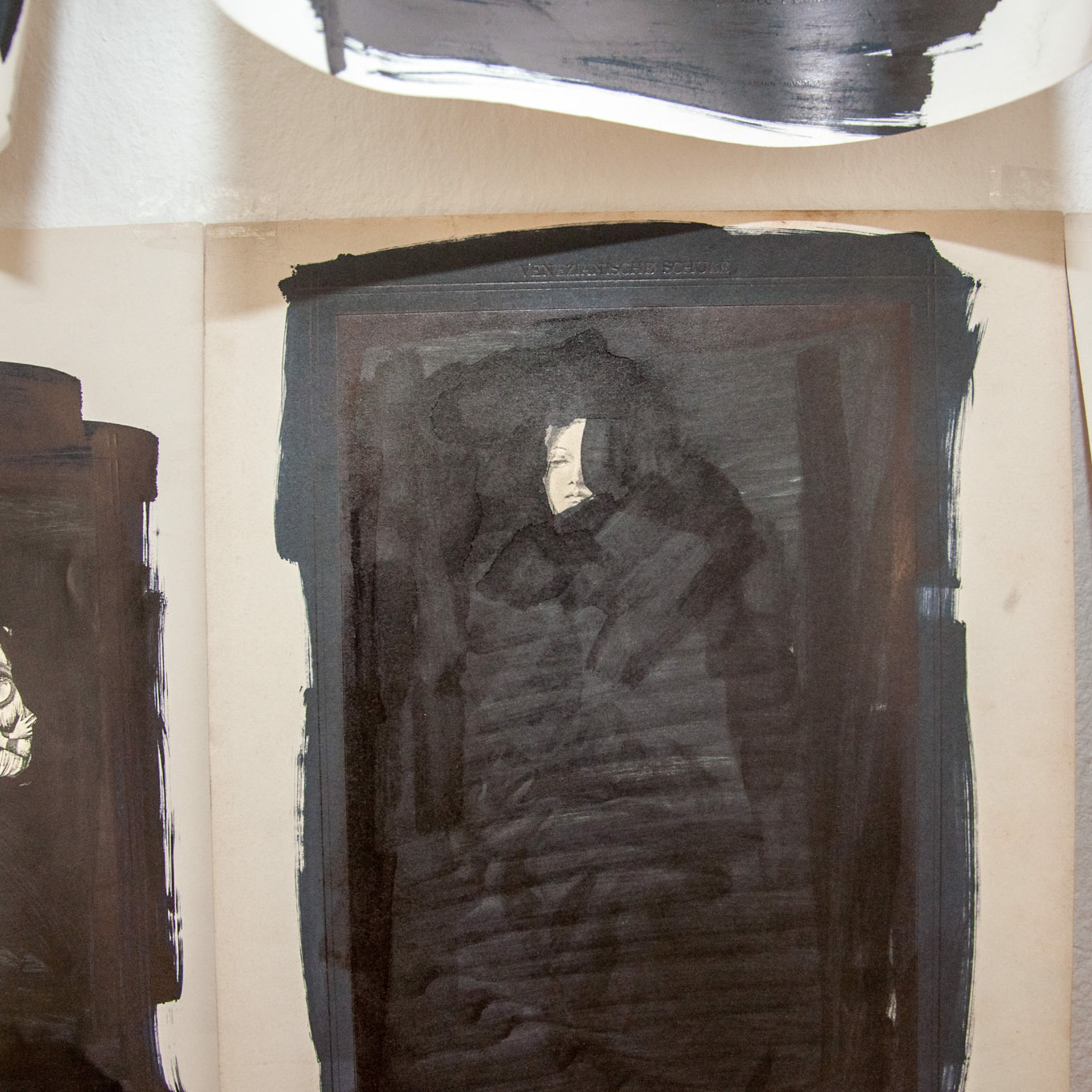On mercy and being merciless
Sancta Maria, Mater Dei,
ora pro nobis peccatoribus nunc
et in hora mortis nostrae.
Amen.
This is a prayer many people in Mexico learn as children, and many times these are also their last words: Piedad. Ruega por nosostros.
Sancta Maria, Mater Dei,
ora pro nobis peccatoribus nunc
et in hora mortis nostrae.
Amen.
This is a prayer many people in Mexico learn as children, and many times these are also their last words: Piedad. Ruega por nosostros.
The series of paintings is the result of deep concerns regarding Mexico and what is happening in the country. The whole series displays tortured and executed human beings, images one can see in newspapers every day. I use these as an outlined foundation and afterwards paint weeping Madonnas over them. I aim to use them to represent the fragmentation and suffering of the nation.
I selected an image from the series which displays six corpses hanging off a footbridge, which happened some years ago in the state of Veracruz. Three of the six were women who were raped and afterwards tortured to death. Their hanging corpses were meant as a direct message to the state, signifying that the Mexican drug cartels are more powerful than official institutions. After this incident, the government stated that the executed people were members of one cartel who were killed by members of a competitor. Many such statements have been made in similar cases. It is as if there is often a different, real truth that one will never discover. Piedad. Mercy.
A sketch of an Aesthetic of Infernal Mercy
Hannah Arendt’s concept of the banality of evil can without question be applied to Mexico. The current situation is influenced by enormous problems that can occur in an evil bureaucracy where the act of killing gets trivialized.
People are not only killed but also tortured. After the murders, their corpses are often also desecrated. I will not go into more detail just for the sake of it. It is already difficult enough to know that such things are part of Mexican everyday life at all.
There is a long tradition in the visual arts of displaying all kinds of cruelty in paintings. Currently the Schirn museum in Frankfurt exhibits works by Théodore Gericault, who was famous for his accurate and discomforting representations of dissected corpses. The exhibition also includes one of his most famous pieces, The Raft of the Medusa. It displays the wreck of the French naval frigate Méduse, a tragedy during which 132 seamen died.
Goya’s The Third of May 1808 or his Black Paintings shocked Spanish society. Among currently active artists, the works of Gottfried Helnwein express a direct offense to the idea of innocence. One can also think of Hermann Nitsch and his depiction of sacramental violence, and of Joel-Peter Witkin and his representation of raw ugliness.
Mercy in times of drug wars
In the last twelve years, over fifty thousand Mexicans were killed in the drug war. Among them were many innocent people, who just happened to be at the wrong place at the wrong time. Often, the Mexican government considers these victims as suspects and regards their death as deserved.
The response of the Catholic Church to these problems is two-faced. On one hand, many priests fight for social equality, and regularly receive death threats and thus constantly fear for their lives. However on the other hand are many priests who are accomplices of the cartels, for example they accept payments of several million pesos to splendidly renovate their churches, in keeping with the motto: When god receives the money, it is always just.
Almost 500 years ago, the Virgin Mary supposedly appeared to the indigenous man Juan Diego. Tradition has it that she stated: I take Mexico under my wings. You are the very smallest of all my children.
Does she still protect Mexico today? Did she forget us?
Does she still protect Mexico today? Did she forget us?
Within this context, the work presented here was also heavily influenced by Georges Bataille, especially his philosophical treatise The Tears of Eros.
If mercy is God’s expression of love, what then is mercilessness? Is it God’s hatred? Oblivion? Indifference? Or was Pelagius right when he stated that God’s creation was malignant?

